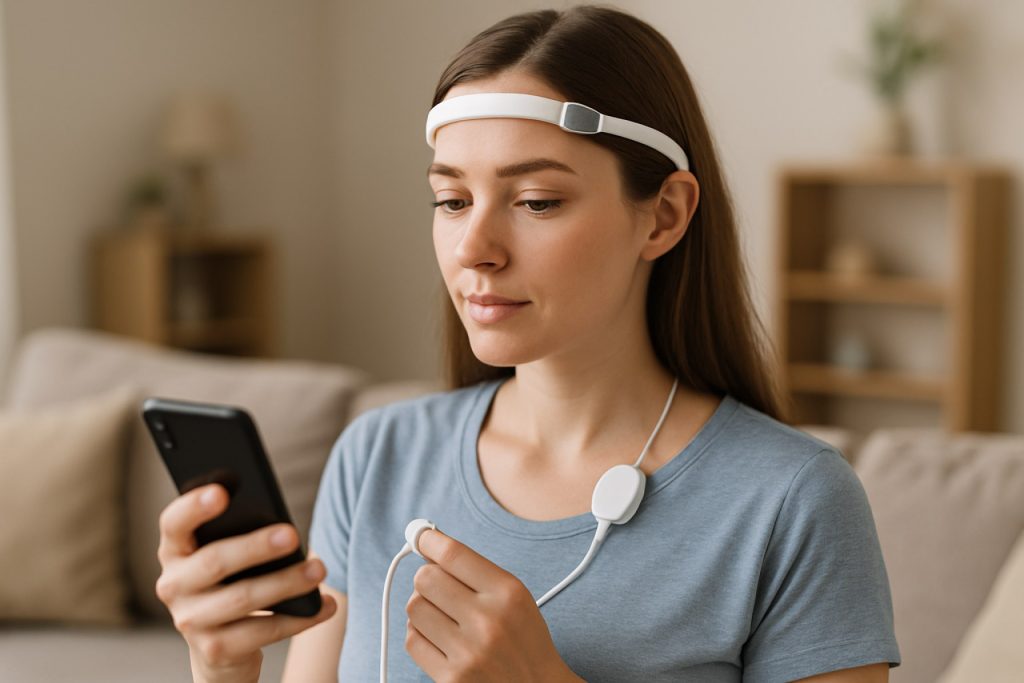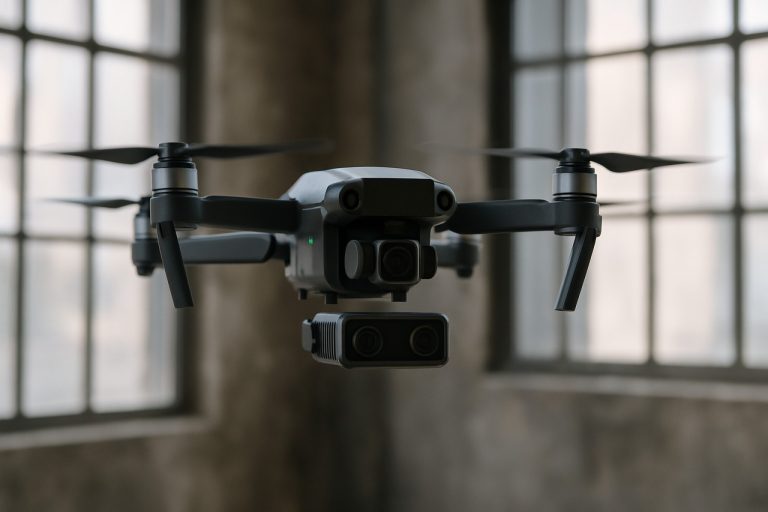
Biofeedback Wearable Technology Market Report 2025: In-Depth Analysis of Growth Drivers, Innovations, and Global Opportunities. Explore Key Trends, Forecasts, and Competitive Insights Shaping the Industry.
- Executive Summary & Market Overview
- Key Technology Trends in Biofeedback Wearables
- Competitive Landscape and Leading Players
- Market Growth Forecasts (2025–2030): CAGR, Revenue, and Volume Analysis
- Regional Market Analysis: North America, Europe, Asia-Pacific, and Rest of World
- Future Outlook: Emerging Applications and Investment Hotspots
- Challenges, Risks, and Strategic Opportunities
- Sources & References
Executive Summary & Market Overview
Biofeedback wearable technology refers to devices that monitor physiological signals—such as heart rate variability, skin temperature, muscle activity, and brainwaves—and provide real-time feedback to users, enabling them to self-regulate stress, improve health, and optimize performance. In 2025, the global biofeedback wearable technology market is poised for robust growth, driven by rising consumer health awareness, the proliferation of connected health devices, and increasing demand for personalized wellness solutions.
According to Grand View Research, the global biofeedback devices market was valued at approximately USD 1.6 billion in 2023 and is projected to expand at a CAGR of over 7% through 2030. Wearable biofeedback devices—such as smartwatches, fitness bands, and specialized neurofeedback headsets—are a key growth segment, benefiting from advancements in sensor technology, miniaturization, and integration with mobile health platforms.
The market landscape in 2025 is characterized by a convergence of healthcare, consumer electronics, and digital therapeutics. Major players such as Apple Inc., Fitbit (now part of Google), and Garmin Ltd. continue to expand their offerings with enhanced biofeedback features, including stress tracking, sleep analysis, and guided breathing exercises. Meanwhile, specialized companies like Muse and HeartMath are innovating in neurofeedback and heart rate variability monitoring, targeting both consumer wellness and clinical applications.
Key market drivers in 2025 include the growing prevalence of chronic stress and mental health concerns, the shift toward preventive healthcare, and the integration of artificial intelligence for personalized insights. The adoption of biofeedback wearables is further supported by increasing employer wellness initiatives and the expansion of telehealth services, which leverage real-time physiological data for remote monitoring and intervention.
Regionally, North America and Europe remain the largest markets, owing to high consumer adoption rates and supportive regulatory environments. However, Asia-Pacific is emerging as a significant growth region, fueled by rising disposable incomes, urbanization, and expanding digital health infrastructure (MarketsandMarkets).
In summary, the biofeedback wearable technology market in 2025 is defined by rapid innovation, expanding use cases, and increasing integration into mainstream health and wellness ecosystems. The sector is expected to see continued investment and partnership activity as stakeholders seek to capitalize on the growing demand for data-driven, personalized health solutions.
Key Technology Trends in Biofeedback Wearables
Biofeedback wearable technology in 2025 is characterized by rapid advancements in sensor miniaturization, data analytics, and integration with artificial intelligence (AI). These trends are reshaping how users monitor and manage physiological signals for health, wellness, and performance optimization.
One of the most significant trends is the proliferation of multi-sensor platforms. Modern biofeedback wearables now combine photoplethysmography (PPG), electrodermal activity (EDA), electroencephalography (EEG), and electromyography (EMG) sensors within a single device. This convergence enables more comprehensive monitoring of heart rate variability, skin conductance, brainwave activity, and muscle tension, providing richer datasets for both consumers and clinicians. Companies such as Empatica and Neurosteer are at the forefront, offering devices that deliver clinical-grade data in real-world settings.
AI-driven analytics are another key trend, with machine learning algorithms increasingly used to interpret complex physiological data in real time. These algorithms can detect subtle patterns and anomalies, enabling early intervention for stress, fatigue, or neurological events. For example, Wearable Technologies AG highlights the integration of AI for personalized feedback and adaptive coaching, which tailors interventions to individual users’ needs and contexts.
Interoperability and ecosystem integration are also gaining traction. Biofeedback wearables are now designed to seamlessly connect with smartphones, telehealth platforms, and electronic health records (EHRs). This connectivity supports remote patient monitoring and facilitates data sharing between users, healthcare providers, and researchers. Garmin and Fitbit have expanded their APIs and partnerships to enable broader ecosystem participation, enhancing the value proposition for both consumers and enterprise clients.
Finally, form factor innovation is making biofeedback wearables more discreet and comfortable. Flexible electronics, textile-based sensors, and skin patches are replacing bulky wristbands and headsets. According to IDTechEx, the market is seeing a surge in demand for smart clothing and adhesive patches that can be worn continuously without disrupting daily activities.
Together, these technology trends are driving the evolution of biofeedback wearables from niche wellness tools to mainstream health solutions, with significant implications for preventive care, mental health, and chronic disease management in 2025 and beyond.
Competitive Landscape and Leading Players
The competitive landscape of the biofeedback wearable technology market in 2025 is characterized by rapid innovation, strategic partnerships, and a growing influx of both established medical device companies and agile startups. The sector is driven by increasing consumer demand for personalized health monitoring, the integration of artificial intelligence (AI), and the expansion of telehealth services. Key players are differentiating themselves through proprietary sensor technologies, advanced analytics, and user-friendly interfaces.
Leading the market are companies such as Empatica, which has gained significant traction with its FDA-cleared EmbracePlus wearable, designed for real-time physiological monitoring and seizure detection. Neurocare Group is another prominent player, leveraging neurofeedback and biofeedback solutions for mental health and cognitive performance, often integrating their wearables into clinical therapy programs. Muse continues to dominate the consumer neurofeedback segment with its EEG headbands, widely adopted for meditation and stress management.
Tech giants are also making strategic moves. Apple and Fitbit (now part of Google) have incorporated biofeedback features such as heart rate variability (HRV), skin temperature, and stress tracking into their mainstream wearables, blurring the lines between consumer fitness and medical-grade devices. These companies benefit from vast user bases and robust ecosystems, enabling rapid data collection and iterative product improvements.
Startups like Neurovalens and HeartMath are innovating with niche applications, such as vestibular stimulation for weight management and HRV biofeedback for emotional regulation, respectively. Their agility allows them to address specific clinical or wellness needs, often partnering with research institutions to validate efficacy.
- Grand View Research projects continued market growth, driven by rising chronic disease prevalence and the shift toward preventive healthcare.
- Strategic collaborations between device manufacturers and healthcare providers are accelerating, as seen in Empatica’s partnerships with pharmaceutical companies for remote patient monitoring trials.
- Regulatory approvals, such as FDA clearance, are increasingly a differentiator, with companies investing heavily in clinical validation to access insurance reimbursement and clinical adoption.
Overall, the 2025 biofeedback wearable technology market is highly dynamic, with competition intensifying around data accuracy, clinical validation, and seamless integration into digital health platforms.
Market Growth Forecasts (2025–2030): CAGR, Revenue, and Volume Analysis
The biofeedback wearable technology market is poised for robust growth between 2025 and 2030, driven by increasing consumer awareness of health monitoring, advances in sensor technology, and the integration of artificial intelligence for personalized feedback. According to projections by Grand View Research, the global biofeedback devices market, which includes wearables, is expected to register a compound annual growth rate (CAGR) of approximately 7.5% during this period. This growth is underpinned by rising demand for non-invasive health management solutions and the proliferation of connected health ecosystems.
Revenue forecasts indicate that the biofeedback wearable segment will outpace traditional biofeedback devices, with market revenues anticipated to reach over USD 1.2 billion by 2030, up from an estimated USD 700 million in 2025. This surge is attributed to the increasing adoption of smartwatches, fitness bands, and specialized biofeedback wearables for stress management, sleep tracking, and chronic disease monitoring. MarketsandMarkets highlights that the integration of biofeedback sensors into consumer electronics will further accelerate market penetration and revenue growth.
In terms of volume, unit shipments of biofeedback wearables are projected to grow at a CAGR exceeding 8% from 2025 to 2030. The Asia-Pacific region is expected to witness the highest volume growth, fueled by expanding middle-class populations, increasing healthcare expenditure, and the rapid adoption of digital health technologies. North America and Europe will continue to be significant markets, driven by high consumer awareness and the presence of leading technology companies such as Apple Inc. and Fitbit (now part of Google), both of which are investing in advanced biofeedback features for their wearable devices.
- CAGR (2025–2030): 7.5% (revenue), 8%+ (unit volume)
- Revenue Forecast (2030): USD 1.2 billion
- Key Growth Drivers: Consumer health awareness, AI integration, expansion in Asia-Pacific
- Leading Companies: Apple Inc., Fitbit (Google), Garmin Ltd., WHOOP
Overall, the biofeedback wearable technology market is set for significant expansion through 2030, with innovation and consumer demand shaping both revenue and volume trajectories.
Regional Market Analysis: North America, Europe, Asia-Pacific, and Rest of World
The global biofeedback wearable technology market is experiencing robust growth, with regional dynamics shaped by healthcare infrastructure, consumer awareness, and regulatory environments. In 2025, North America remains the dominant market, driven by high adoption rates, advanced healthcare systems, and significant investments in digital health. The United States, in particular, benefits from a strong ecosystem of technology startups and established players, as well as supportive reimbursement policies for digital therapeutics. According to Grand View Research, North America accounted for over 40% of the global market share in 2024, a trend expected to continue into 2025.
Europe follows closely, with countries such as Germany, the UK, and France leading in the integration of biofeedback wearables into preventive healthcare and chronic disease management. The region’s focus on patient-centric care and the proliferation of digital health initiatives, such as the European Commission’s Digital Health Strategy, are accelerating adoption. However, the fragmented regulatory landscape and varying reimbursement policies across EU member states present challenges for market expansion. Despite this, Fortune Business Insights projects steady growth in Europe, with a compound annual growth rate (CAGR) of over 8% through 2025.
- Asia-Pacific: This region is emerging as a high-growth market, propelled by rising healthcare expenditure, increasing prevalence of chronic diseases, and growing consumer interest in wellness technologies. Countries like China, Japan, and South Korea are investing heavily in digital health infrastructure. The proliferation of smartphones and wearable devices, coupled with government initiatives to modernize healthcare, is fostering rapid adoption. According to MarketsandMarkets, Asia-Pacific is expected to register the fastest CAGR among all regions through 2025.
- Rest of World: Markets in Latin America, the Middle East, and Africa are at a nascent stage but show significant potential. Growth is primarily driven by increasing awareness of mental health and stress management, as well as gradual improvements in healthcare access. However, limited infrastructure and lower purchasing power remain barriers to widespread adoption. Strategic partnerships and localized product offerings are key to unlocking growth in these regions, as noted by Allied Market Research.
In summary, while North America and Europe lead in market maturity and adoption, Asia-Pacific is poised for the fastest growth, and the Rest of World regions represent untapped potential for biofeedback wearable technology in 2025.
Future Outlook: Emerging Applications and Investment Hotspots
Looking ahead to 2025, the biofeedback wearable technology market is poised for significant evolution, driven by emerging applications and shifting investment priorities. As the integration of biosensors, artificial intelligence, and cloud connectivity matures, new use cases are rapidly expanding beyond traditional health and wellness monitoring. Notably, mental health management, chronic disease intervention, and performance optimization in both sports and workplace settings are becoming key growth areas.
One of the most promising emerging applications is in mental health, where wearables capable of tracking physiological markers such as heart rate variability, skin conductance, and respiration are being used to detect early signs of stress, anxiety, and depression. Companies like Empatica and Muse are at the forefront, developing devices that not only monitor but also provide real-time feedback and interventions, such as guided breathing or mindfulness exercises. This trend is attracting investment from both healthcare providers and insurers seeking to reduce costs through preventive care.
In chronic disease management, biofeedback wearables are increasingly being integrated into remote patient monitoring programs. Devices that track glucose, blood pressure, and cardiac rhythms are enabling more personalized and timely interventions for conditions like diabetes and hypertension. The adoption of these technologies is being accelerated by regulatory support and reimbursement models, particularly in North America and Europe, as highlighted by Frost & Sullivan.
Sports and fitness remain a robust investment hotspot, but the focus is shifting from general activity tracking to advanced performance analytics. Wearables are now capable of providing athletes and coaches with granular biofeedback on muscle fatigue, hydration, and recovery, as seen in products from WHOOP and Garmin. This is opening new revenue streams in professional sports, collegiate athletics, and even corporate wellness programs.
- Asia-Pacific is emerging as a key region for investment, driven by rising health awareness and government initiatives supporting digital health, according to IDC.
- Venture capital funding is increasingly targeting startups focused on AI-driven biofeedback analytics and integration with telehealth platforms, as reported by CB Insights.
- Collaborations between wearable manufacturers and pharmaceutical companies are expected to accelerate, particularly for clinical trials and drug adherence monitoring.
In summary, 2025 will see biofeedback wearable technology move deeper into healthcare, mental wellness, and performance optimization, with investment flowing toward solutions that offer actionable insights and seamless integration with broader digital health ecosystems.
Challenges, Risks, and Strategic Opportunities
The biofeedback wearable technology market in 2025 faces a complex landscape of challenges, risks, and strategic opportunities as it matures and expands across healthcare, wellness, and consumer segments. One of the primary challenges is data privacy and security. As wearables collect sensitive physiological data—such as heart rate variability, skin conductance, and EEG signals—manufacturers must comply with stringent regulations like GDPR and HIPAA. High-profile breaches or misuse of health data could erode consumer trust and invite regulatory scrutiny, impacting market growth (U.S. Food & Drug Administration).
Another significant risk is the variability in clinical validation and efficacy. While some biofeedback wearables are supported by robust clinical evidence, many consumer-grade devices lack rigorous validation, leading to skepticism among healthcare professionals and payers. This inconsistency can hinder integration into formal healthcare pathways and limit reimbursement opportunities (Grand View Research).
Technical challenges also persist, including sensor accuracy, battery life, and device interoperability. Ensuring reliable, real-time data capture in diverse real-world conditions remains a hurdle, especially for multi-sensor devices. Additionally, the rapid pace of innovation can lead to product obsolescence and increased R&D costs, pressuring margins for both startups and established players (IDTechEx).
Despite these risks, strategic opportunities abound. The growing prevalence of chronic conditions, mental health concerns, and the shift toward personalized medicine are driving demand for biofeedback solutions. Partnerships between wearable manufacturers and healthcare providers can facilitate clinical integration, while collaborations with insurers may unlock new reimbursement models. Furthermore, advances in AI and machine learning are enabling more sophisticated analytics, transforming raw biofeedback data into actionable insights for both users and clinicians (Mordor Intelligence).
- Expanding into emerging markets, where mobile health adoption is accelerating, presents a significant growth avenue.
- Developing open platforms and APIs can foster ecosystem partnerships and third-party innovation.
- Focusing on user experience and long-term engagement will be critical for differentiation as the market becomes more crowded.
In summary, while biofeedback wearable technology faces notable challenges in 2025, companies that proactively address regulatory, technical, and clinical hurdles—and leverage strategic partnerships—are well-positioned to capitalize on the sector’s robust growth potential.
Sources & References
- Grand View Research
- Apple Inc.
- Fitbit (now part of Google)
- HeartMath
- MarketsandMarkets
- Empatica
- Wearable Technologies AG
- IDTechEx
- Neurocare Group
- Muse
- Neurovalens
- WHOOP
- Fortune Business Insights
- Allied Market Research
- Frost & Sullivan
- IDC
- Mordor Intelligence



